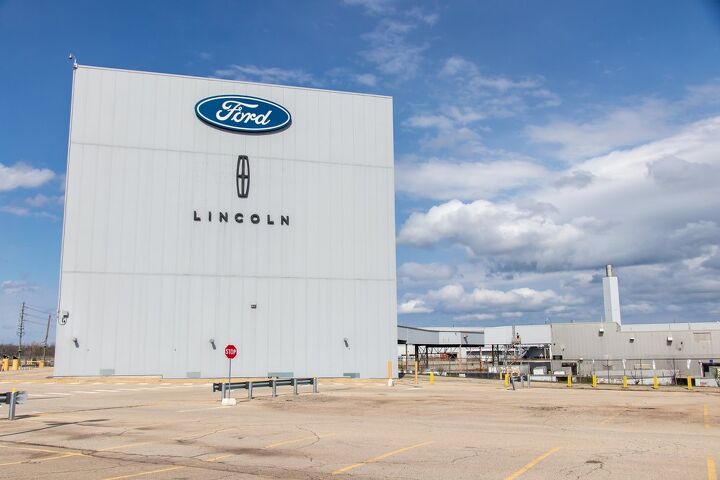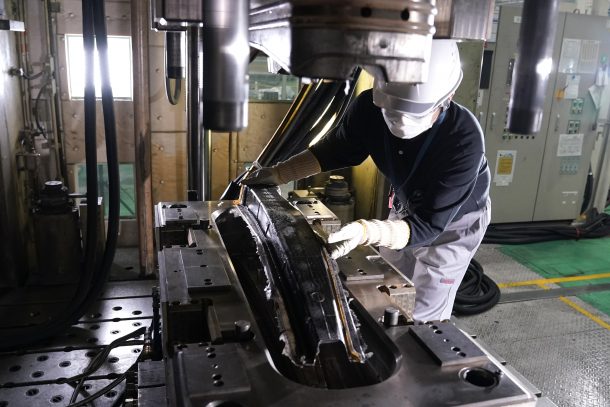#IndustryNews
Salaried Ford Employees to Work Remotely Through June
With so many individuals still working remotely to combat The Dreaded Coronavirus™ from spreading, there have to be thousands of pools on when employees will finally be allowed to return to their cobweb-filled offices. But they have to be getting pretty boring because its hard to imagine anybody confidently putting their money down on late 2021 when this whole thing started in February and the press still thought it wouldn’t be a big deal. The narrative has definitely changed since then and continued social distancing has become a popular solution among businesses, even as state-sanctioned lockdown protocols decline after a few were ruled to be unconstitutional.
On Thursday, Ford decided to keep most of its salaried employees at home until at least June of 2021. That’s eight more months of not going into the office and matches the timetable General Motors issued a few weeks ago.
Canada Contributing $447 Million Toward Ford Plant Upgrades
With Ford and Unifor having agreed to a new three-year contract last month, Oakville Assembly (which currently manufacturers the Ford Edge and Lincoln Nautilus) is slated to be retooled to manufacturer electric vehicles and their batteries. While the first example wouldn’t roll off the assembly line until 2026, according to the agreement, Canada is excited about the prospect of green jobs. In fact, the Canadian government has committed itself to an ambitious program aimed at boosting electric vehicle sales in order to achieve net-zero carbon emissions by 2050.
We’re always suspect of central planning, as regulatory changes often have unintended consequences for the associated industries, but need to praise Canada for actually putting some money where its mouth is. Barring a mishap in 2023, the nation has promised to contribute $447 million (split evenly between the Ontario and federal governments) toward Ford’s 1.4-billion program to convert the facility.
Fancy Forward: Mercedes-Benz Can No Longer Cater to Plebs
Mercedes-Benz looks poised to retreat from high-volume compacts. During an online corporate strategy meeting held on Tuesday, Daimler CEO Ola Källenius indicated that the luxury subsidiary may have overextended itself.
“Maybe we went at a bit too far to cover each and every space into each and every segment. Compact particularly comes to mind,” he explained. “This is not where the main thrust should go, we should not become a competitor of the volume makers.”
But the company only has itself to blame for that. Around a quarter of the brand’s annual sales come from compact vehicles and they’ve been taking up a larger share of its product portfolio. Källenius seems to think Mercedes has done enough to broaden its appeal and need to refocus on higher-end vehicles with better margins. “Our [current] strategy is designed to avoid non-core activities,” he said, adding that funds will be prioritized for more profitable products.
“We’re not chasing volume, we’re targeting profitable growth.”
Mercedes-Benz Abandons Manual Transmission, Sticks With Streamlining
As the manual transmission gradually joins the wheel-mounted throttle lever in the automotive history trash bin, we’ve been wondering which manufacture would be the next to take a bold stance against be-clutched vehicles. Today we have our answer, thanks to a tweet explaining the brand’s research boss had indicated Mercedes-Benz doesn’t have room for manuals in its current restructuring program.
“The head of @MercedesBenz’s R&D operations, Markus Schaefer, has confirmed the company will ‘eliminate manual transmissions’ as part of cost-cutting initiatives that will also see a ‘substantial reduction in platforms’ and a ‘very dramatic reduction in combustion engines,'” automotive journalist Greg Kable explained via social media on Tuesday.
Faraday Future Returns, Discusses Going Public With Reverse Merger
Faraday Future is hoping to go public through a reverse merger, proving that the finances associated with electric vehicle startups rarely operate within the confines of reality. Founded by Chinese businessman Jia Yueting in April 2014, the company began making waves the following year when it announced a plan to invest over $1 billion a factory in Nevada (its first) and went on a massive hiring spree. With the help of millions in government tax incentives, the plan was to start building some of the world’s most advanced EVs by 2017.
But people were becoming suspicious as early as 2016, when questions were raised about where the money was coming from and how much was left. By year’s end, work on Faraday’s Nevada facility had been suspended indefinitely. Following a lightly-botched presentation of its future product in early 2017, more outlets began to report the company was quickly running out of money as it backed out of several more projects. Months later, an internal power struggle left founder Jia Yueting as the primary decision-maker. Faraday Future spent the next few years scrambling to repay its debts and scrounging for (mostly Chinese) investors that might get it closer to its ultimate goal of building cars.
Nikola Criticized for Censoring YouTube Videos That Made It Look Bad
We’re getting the feeling that Nikola Corp is going to be the biggest dumpster fire since our multi-year love/hate relationship with Faraday Future. Content creators on YouTube are now criticizing the startup for abusing copyright claims to strike down videos that were coming down hard on its recent actions after at least two financial commentators operating channels on the Google-owned video platform have had clips removed this week.
While copyright abuses have become uncomfortably common as a way to censor opponents on YouTube over the last few years, they’ve become increasingly predatory as Google rarely seems interested in siding with the little guy. We suppose this was the inevitability of the proliferation of a corporate-controlled internet but knowing that makes the practice seem no less grimy, especially with terms and services being so woefully vague that content can be removed for practically any reason, to begin with. Nikola is hardly the first company to engage in this grotesque behavior and will not be the last.
Report: Volkswagen to Begin Distancing From Lamborghini
More evidence has surfaced that Volkswagen Group may be on the cusp of relieving itself of some of its less-profitable subsidiaries. Following news of a November board meeting that would help decide the fate of numerous ultra-premium brands, rumor has it that VW is currently working out ways to give Lamborghini more autonomy and open the door for supply deals that could foreshadow it being listed on the stock market.
Additionally, the automaker’s supervisory board has already reportedly met to discuss the future of Bentley, Bugatti, Lamborghini, and its Ducati motorcycle arm. Discussions were said to include how to electrify the more sporting nameplates via industrial partnerships and procuring investment dollars. Some of these deals are already in the early stages, according to Reuters, with a possible IPO for the Italian supercar brand alleged to be moving forward at the time of this writing.
Rimac Planning to Buy Bugatti?
Croatian supercar firm Rimac Automobili is reportedly in the process of acquiring Bugatti from Volkswagen. While rumors had been swirling that VW might offload a few of its brands in a bid to focus on electrification and emissions compliance, this is is the first time we’ve heard credible rumblings about real action being taken.
Considering the space Rimac occupies, adding the formerly French Bugatti brand also makes some amount of sense. We’d be a lot more skeptical if founder Mate Rimac was alleged to be making a move on SEAT because he suddenly found a passion for designing economy cars. But the prospective tie-up is more complicated than it seems at first blush. Volkswagen Group’s Porsche actually owns a 15-percent stake in Rimac so it can tap into some of its sweetest technical equipment for the purpose of building EVs.
GM Files State Lawsuits Against FCA Over Racketeering Claims
General Motors refuses to let the dismissal of its federal racketeering case against Fiat Chrysler Automobiles stand in the way of getting what it believes is true justice. On Monday, the automaker filed its latest claim with Wayne County Circuit Court in Michigan. These are separate from the New Jersey lawsuit it has targeting former board member and ex-UAW vice president Joe Ashton, who GM has accused of being a hired mole. However, Ashton was named in the trio of new court filings, along with Alphons Iacobelli — the man who pled guilty to embezzling union funds and kicked off a gigantic federal corruption investigation into the UAW.
The automaker also named some of the banks it claimed were involved in the union scandal and continues to allege that FCA “provided millions of dollars to co-conspirators via numerous undisclosed offshore bank accounts and utilized such accounts to purchase the support and silence of numerous high-level UAW officers and FCA executives.” Fiat Chrysler’s assumed goal? Forcing General Motors into a merger or destroy it if the merger failed by negotiating favorable terms with the union and encouraging leadership into adopting positions that would harm GM.
U.S. Vehicle Inventories Exceptionally Lean Going Into Fall
Not that it should be any surprise with pricing creeping up, but U.S. vehicle inventories are some of the lowest we’ve seen in roughly a decade. Unfortunately, it’s difficult to get a solid estimate on supplies as many automakers no longer have the balls to conduct monthly reports, at least not any they’re willing to share. The few that still do have been a little light on the lot, however.
Going into fall, we’d expect to see supplies around the 60-day mark with about a quarter of those vehicles representing the upcoming model year. Mainstream brands seem to be running with a lot fewer cars this month. On Monday, Automotive News estimated that September was probably representing the lightest industry-wide supply of vehicles since October of 2011. Meanwhile, Cox Automotive has the industry sitting on 56 days worth of cars — noting that national inventories shrank to 2.26 million vehicles, or about 870,000 fewer from the year before.
Nissan Announces 'Breakthrough' in Carbon Fiber Production
Once reserved for aircraft and the world’s most expensive sports cars, carbon fiber has been gradually wriggling its way into the mainstream. On Thursday, Nissan announced it had whipped up a method to manufacture carbon fiber reinforced plastic (CFRP) more easily and shorten production time by around 80 percent — adding that it planned to take advantage of the material in order to build increasingly lightweight cars.
The manufacturer also suggested the new process will reduce the cost of manufacturing CFRPs, addressing the industry’s favorite excuse for why they don’t use it more often. That said, the financial inconvenience of implementing carbon fiber is really a byproduct of how labor intensive it is. Most parts are laid into molds one layer at a time with the help of an expert and use vacuum pressure to ensure the resin sets evenly, since they can’t be machine pressed. Yet Nissan felt stamping was the way to go with carbon fiber and claims to have figured out how it should be done.
Ford to Cut 1,400 Salaried Positions in U.S. Through Buyout Initiative
Barely a full day after news broke that Ford was on the cusp of announcing layoffs, Ford announced those layoffs. On Wednesday, the automaker informed employees that it needs to eliminate 1,400 salaried jobs as part of its $11-billion restructuring program. The good news is that these cuts will be handled through retirement buyouts that won’t leave the departing workforce empty handed. The automaker’s internal memo also stated that the buyouts would be voluntary.
The Blue Oval previously said it expects a full-year loss in 2020 thanks to the pandemic, with a pre-tax profit of anywhere between $500 million and $1.5 billion in the third quarter.
Ford, BMW Planning Job Cuts In U.S.
With a large number of automakers pinching pennies these days, it’s easy for the details of various restructuring plans to fall down the memory hole. For example, Ford has been engaged in an ambitious cost-cutting program since 2018. The $11-billion plan was said to take anywhere from three to five years to complete, requiring legitimate sacrifices at the company — including the discontinuation of all sedans in the United States, ending operations in Russia, closing facilities in Europe, and rolling layoffs around the globe.
Ford has actually accelerated its timeline to see how much it can get done before 2021, resulting in the elimination of 7,000 salaried positions globally last year. The company has decided to end another 1,000 salaried positions in the United States.
Prepare Yourself for Another Huge Electric Vehicle IPO
Chinese electric vehicle manufacturer Xpeng announced Thursday a decision to increase the size of its U.S initial public offering (IPO) by more than a third after realizing Wall Street can swallow anything so long as it promises a greener tomorrow.
Co-founded in 2014 by two former executives from China’s GAC Group, the EV startup has already managed to produce around 20,000 vehicles for the Asian market. It also became engaged in an intellectual property dispute with Tesla (which claimed Xpeng stole its Autopilot source code) in 2019 and ran afoul with California’s Department of Motor Vehicles after failing to submit disengagement reports on its self-driving test vehicles in 2018.
Such hurdles don’t seem to have slowed the company’s rise to prominence, however. Xpeng is adept at fundraising, amassing well over a billion dollars through strategic partnerships in just the last two years. Meanwhile, the adjusted IPO filed on the New York Stock Exchange this August now targets a cool $1.5 billion USD.
UAW Slams GM for Allowing Office Staff on Assembly Lines
Alleged absenteeism stemming from the coronavirus outbreak encouraged General Motors to place salaried volunteers on assembly lines in Wentzville, MO. This has not gone over well with the UAW, which suggests GM’s decision to utilize non-union staff is in direct violation of its 2019 labor contract. The union claims white-collar workers have no business being on assembly lines and has issued a formal warning to the automaker.
Established in 1983 as a stamping and production facility, the site is currently responsible for General Motors’ full-size vans (e.g. Chevrolet Express) and midsize trucks (Chevy Colorado/GMC Canyon). The facility has room for 4,560 employees — most of whom are hourly. Those employees are split between the the usual three shifts, with GM claiming difficulties in keeping them populated.
In July, the company said it might have to reduce the plant to just two shifts before pressure from outside convinced it otherwise. This led to the automaker seeking about 200 temporary workers and placing ads with local outlets.




























Recent Comments